The rocky and forested peninsula known as Vironniemi was completely uninhabited at the time when Helsinki was moved southwards from the mouth of the Vantaanjoki river in 1640. The peninsula was nevertheless an important landmark for sailors, as it had to be skirted to access the main harbour on the eastern side.
By the end of the 1600s the small settlement of Helsinki comprised four quarters. To the southeast was “Fiskarback qwarteret”, an area inhabited by fishermen in what is now the western section of Katajanokka. With the exception of the modest fishermen’s huts, one brick factory and a large royal warehouse on the island of Laukkasaari, the area was still predominantly undeveloped.
The name Katajanokka – Skatudden in Swedish – dates back to the late 1600s, when the area was known as Estnäs Skatan referring to the headland of the “Estonian Peninsula” (Vironniemen kärki). In a map dating from 1775 the name is written as Skat Udden, and by 1886 the Finnish translation Katajanokka appears on maps. Officially, the district was named Katajanokka only in 1959. The small canal between the peninsula and the mainland was built in 1844. Satamakatu, the street that crosses the peninsula behind Uspenski Cathedral, was originally designed as an esplanade. It was later named Västra Hamngatan and then Satamakatu in 1928.
In the early 1800s Katajanokka was still on the outskirts of the main town. The small huts were inhabited mainly by sailors and their widows, and there were only two significant buildings on the peninsula: the Naval Barracks designed by Engel and completed in 1825, and the Mint Building designed by A. M. Gornostajev and completed in 1863.
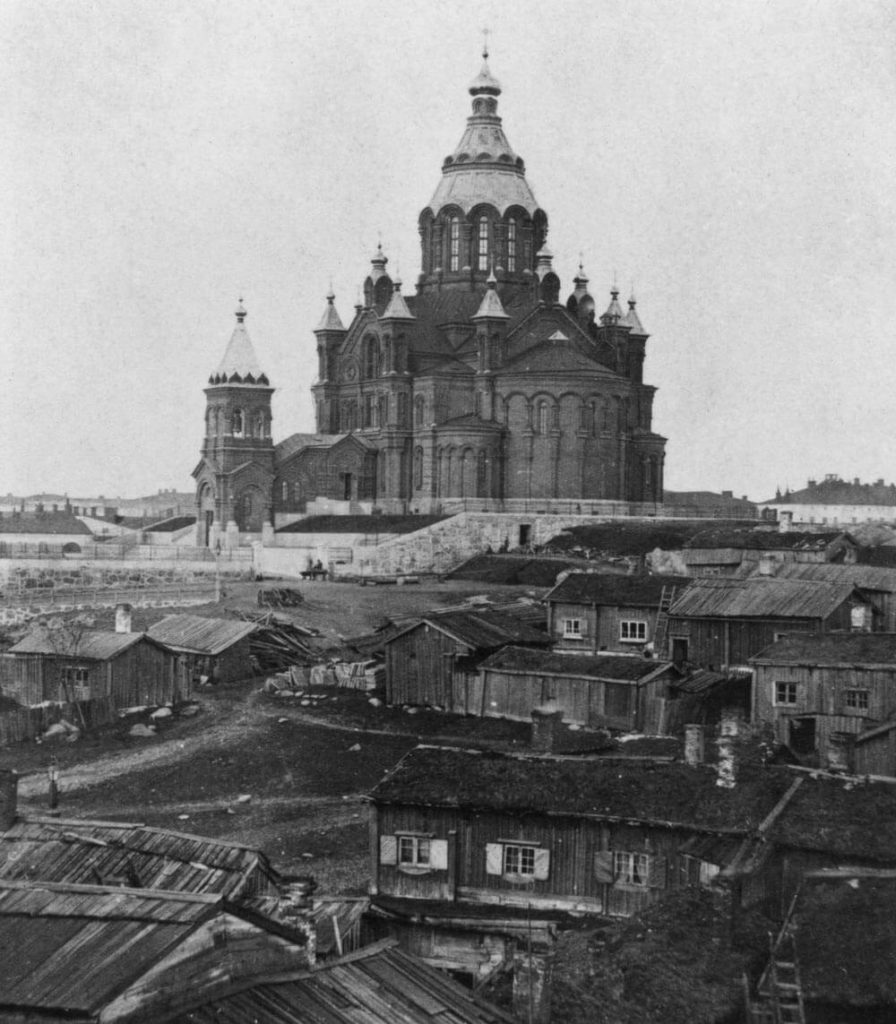
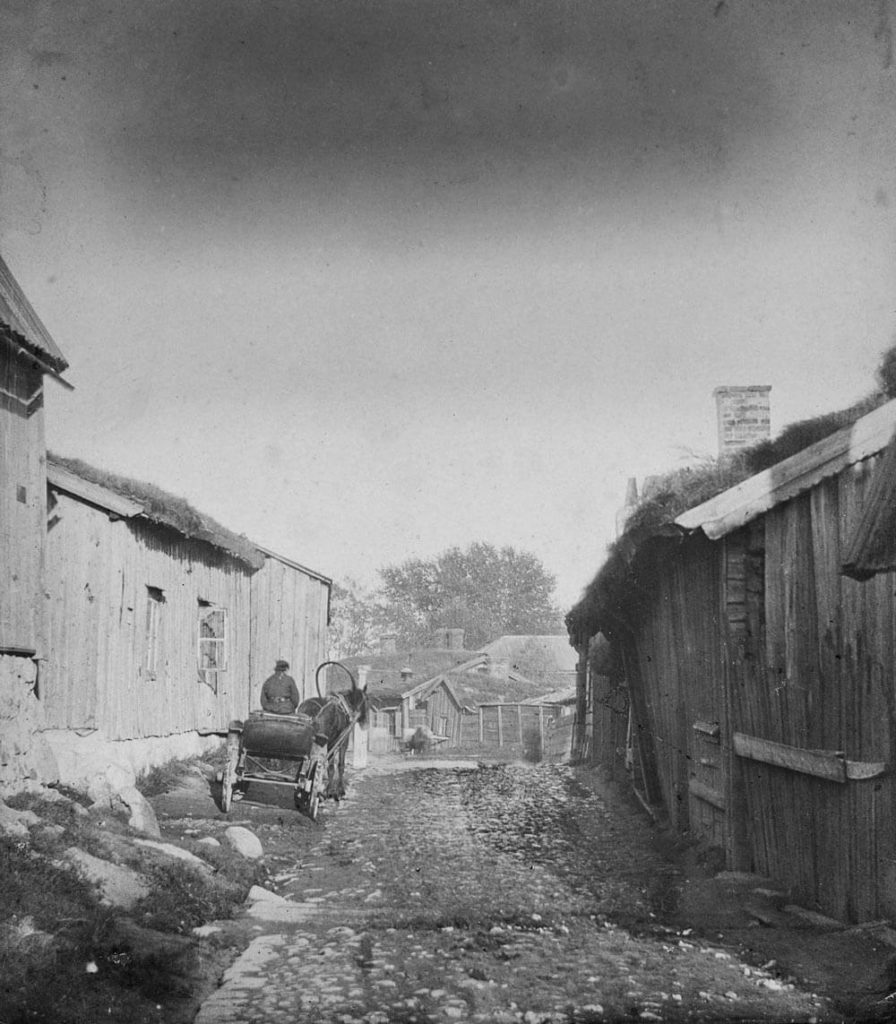
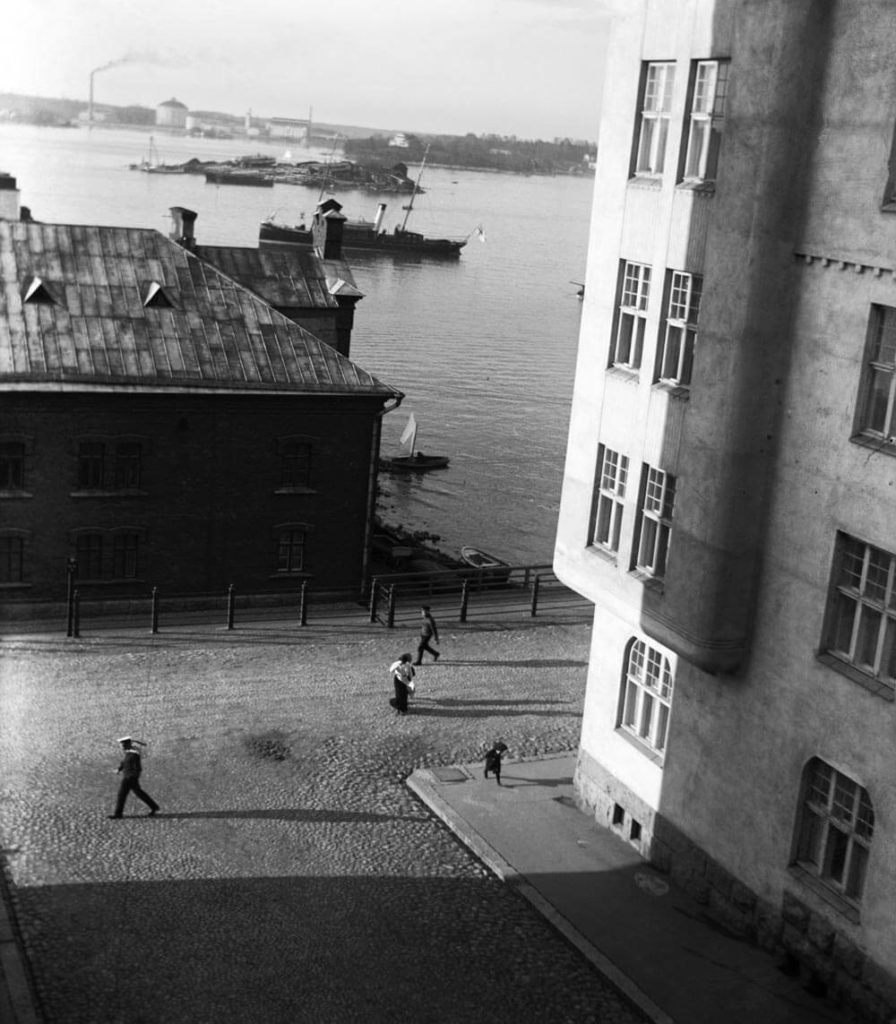
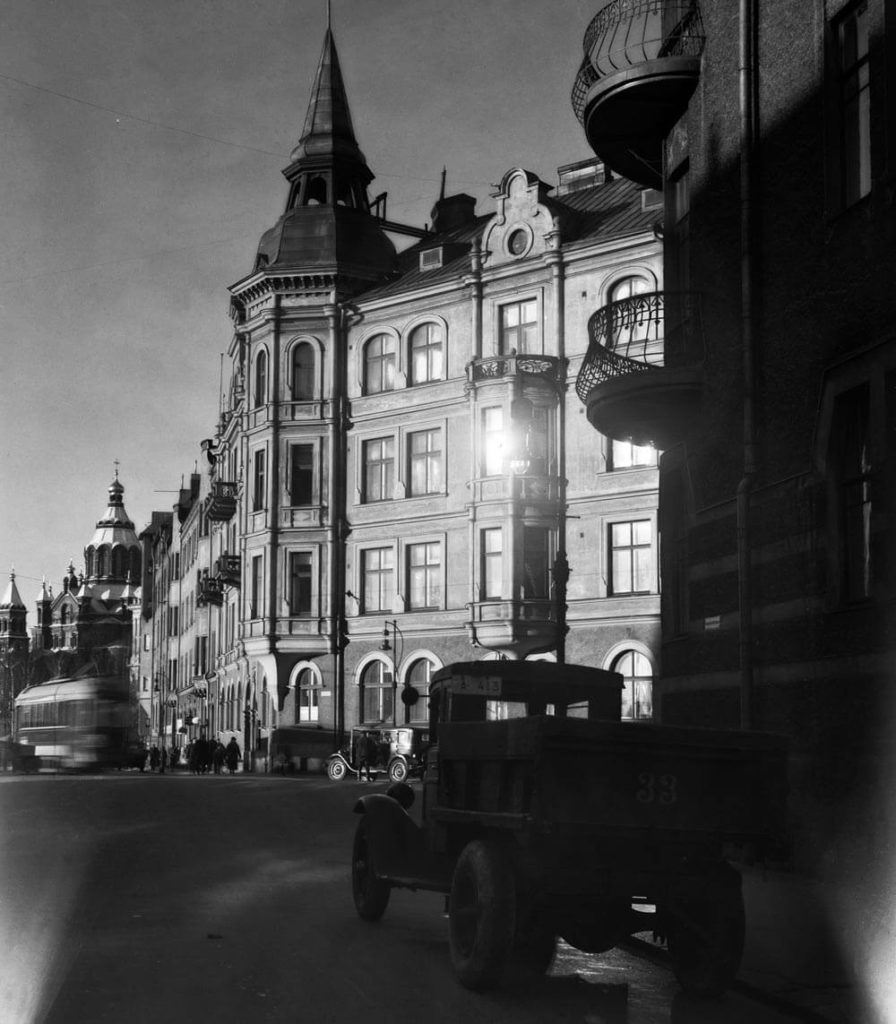
The area was not developed in earnest until the second half of the 1800s, when large stone buildings began to appear in Helsinki. Uspenski Cathedral, which dominates the peninsula and was also designed by Gornostajev, was completed in 1868. Warehouses were also built along the waterfront during this period. In the late 1800s and early 1900s Katajanokka was transformed from a shantytown into an impressive Art Nouveau residential district.
At the entrance to Katajanokka is a monument to another form of architecture in the shape of the white marble office building designed by legendary Finnish architect Alvar Aalto (1898–1976) and completed in 1962. The building was built controversially on the site of an ornate redbrick residential building designed by Theodor Höijer (1843–1910) in the Neo-renaissance style and known as “Norrmén’s Palace” after its owner. Alfred Norrmén (1858–1942) was an influential banker and chairman of the city council.
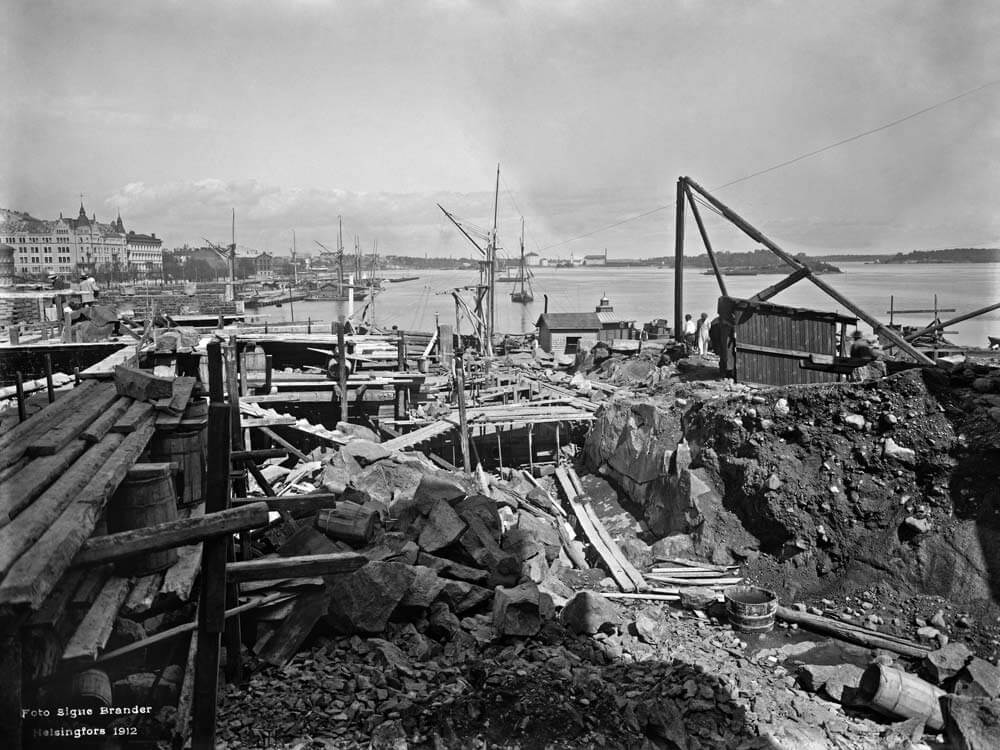
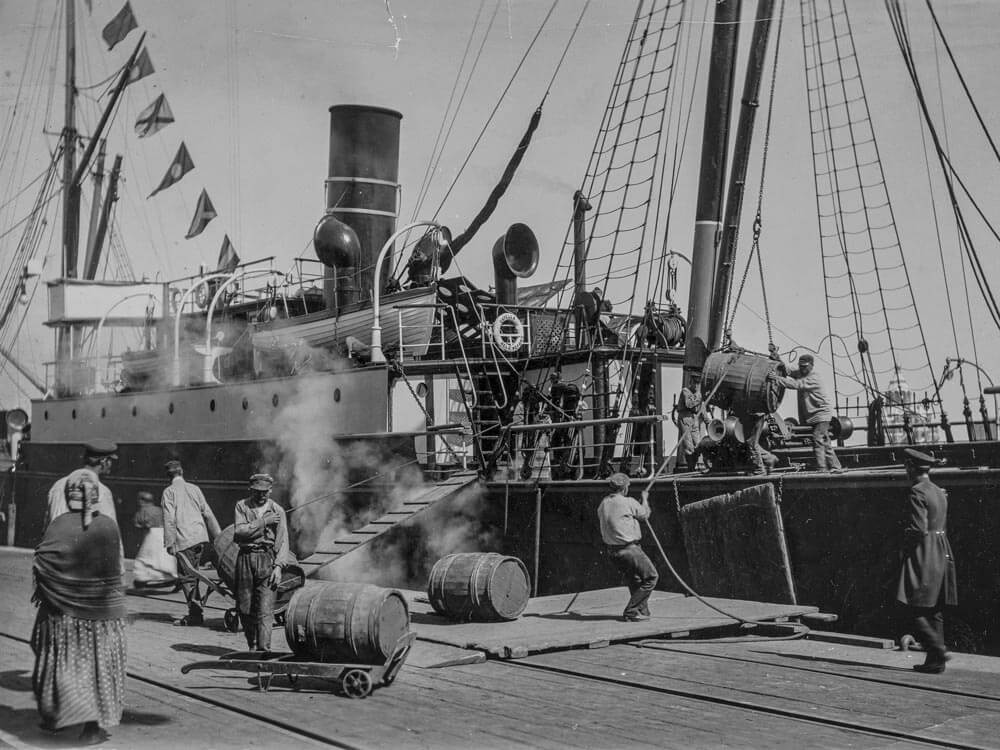
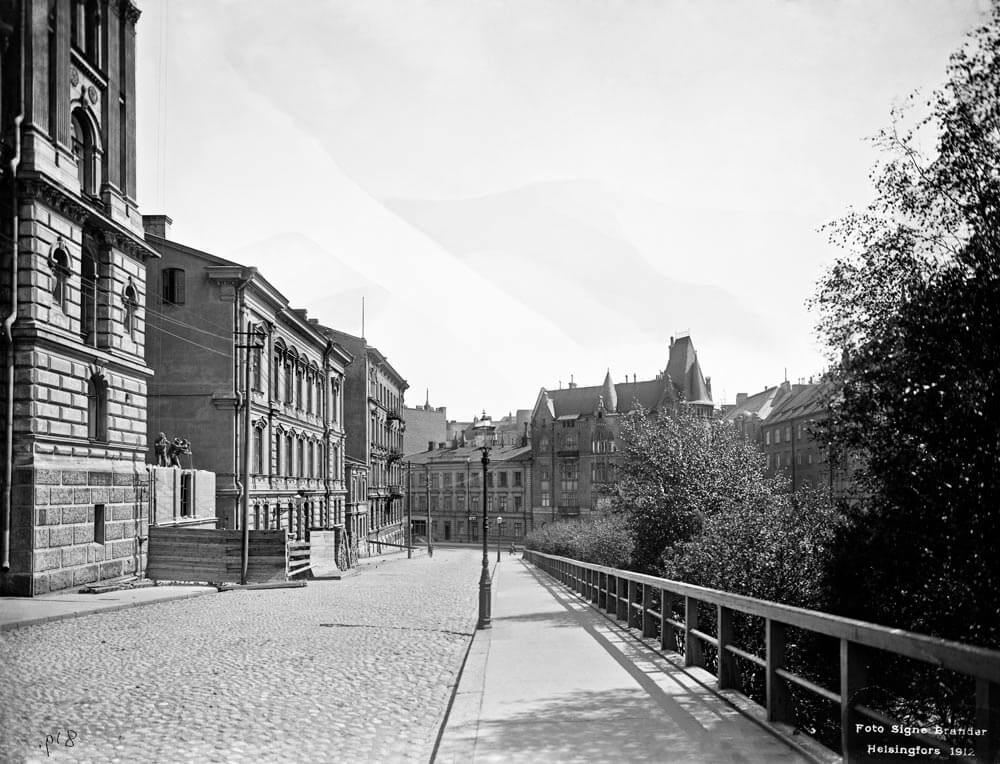
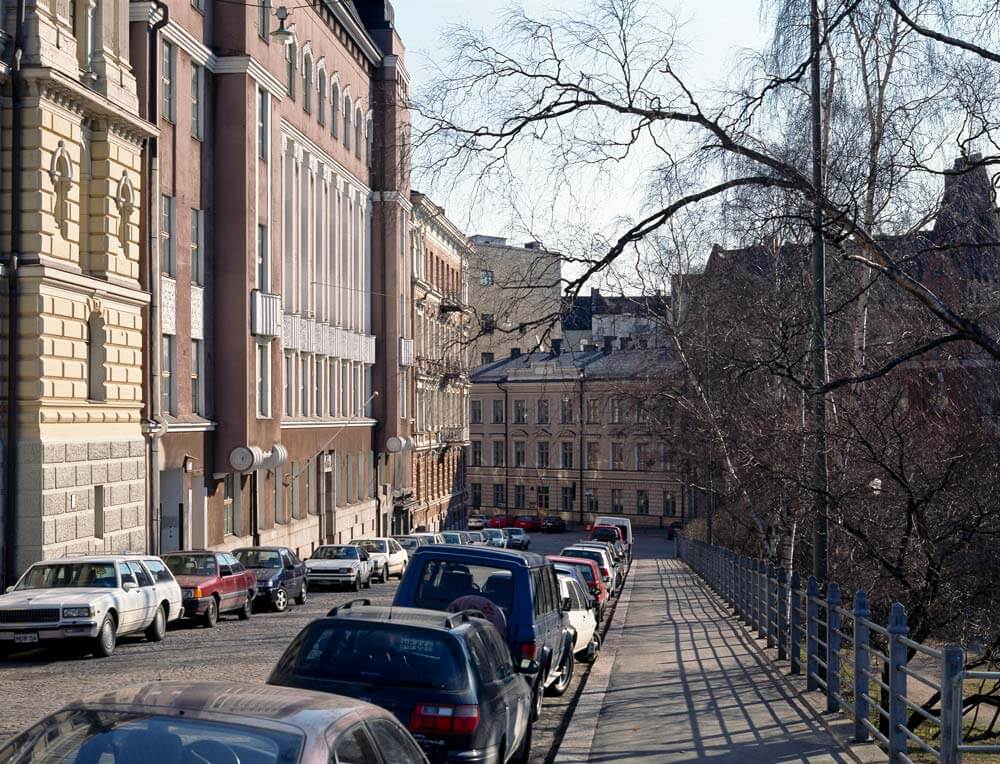
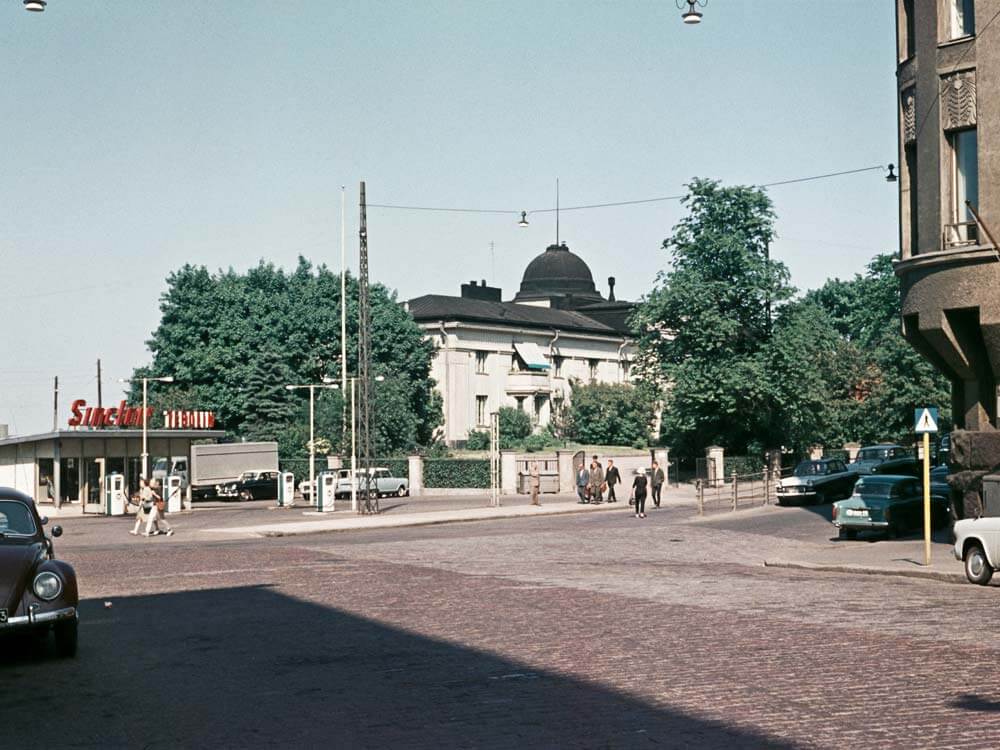
In the centre of the peninsula is the former Helsinki County Prison. The prison offices and church date back to 1837. The main redbrick cellblocks were designed by L. I. Lindqvist and Theodor Decker and built in 1888. Staff quarters were also built in the same period. The prison complex is surrounded by a redbrick wall. The prison was decommissioned in 2002 and converted into use as a hotel.
The Naval Barracks were designed by C. L. Engel and housed the Finnish naval unit from 1833 onwards. The Naval Barracks Hospital was designed by A. F. Granstedt (1800–1849) and completed in 1838. The Naval Barracks were restored between 1984 and 1989 and have since housed the Ministry of Foreign Affairs. The main square is named after President Martti Ahtisaari (1937–), recipient of the Nobel Peace Prize in 2008.
The contemporary residential district at the tip of the peninsula was developed in the 1970s and 1980s based on the winning proposal by three young architects, Vilhelm Helander, Pekka Pakkala, Mikael Sundman.
Katajanokka harbour
The southwestern shoreline of Katajanokka was earmarked as an extension of the South Harbour for the first time in the city plan of 1875. In the city plan proposal for 1882 the area was more clearly defined as a freight harbour complete with warehouses and railway tracks. The main railway line connecting the South Harbour and Katajanokka via the Market Square was completed in 1895. Around the same time the wharf was extended to the north. The current harbour area dates back to 1956, and the quay at the tip of the peninsula was built in 1980.
Katajanokka harbour was used for cargo up until the 1970s. The railway line was decommissioned in 1980 and removed altogether in 1985, after which the area was developed into a ferry and cruise ship harbour. The red Viking Line ferries operate daily to and from Stockholm, and several hundred international cruise ships visit Helsinki each summer. The historic redbrick warehouses have been converted into hotels, offices, restaurants and congress centres. The district is home to around 4600 residents.